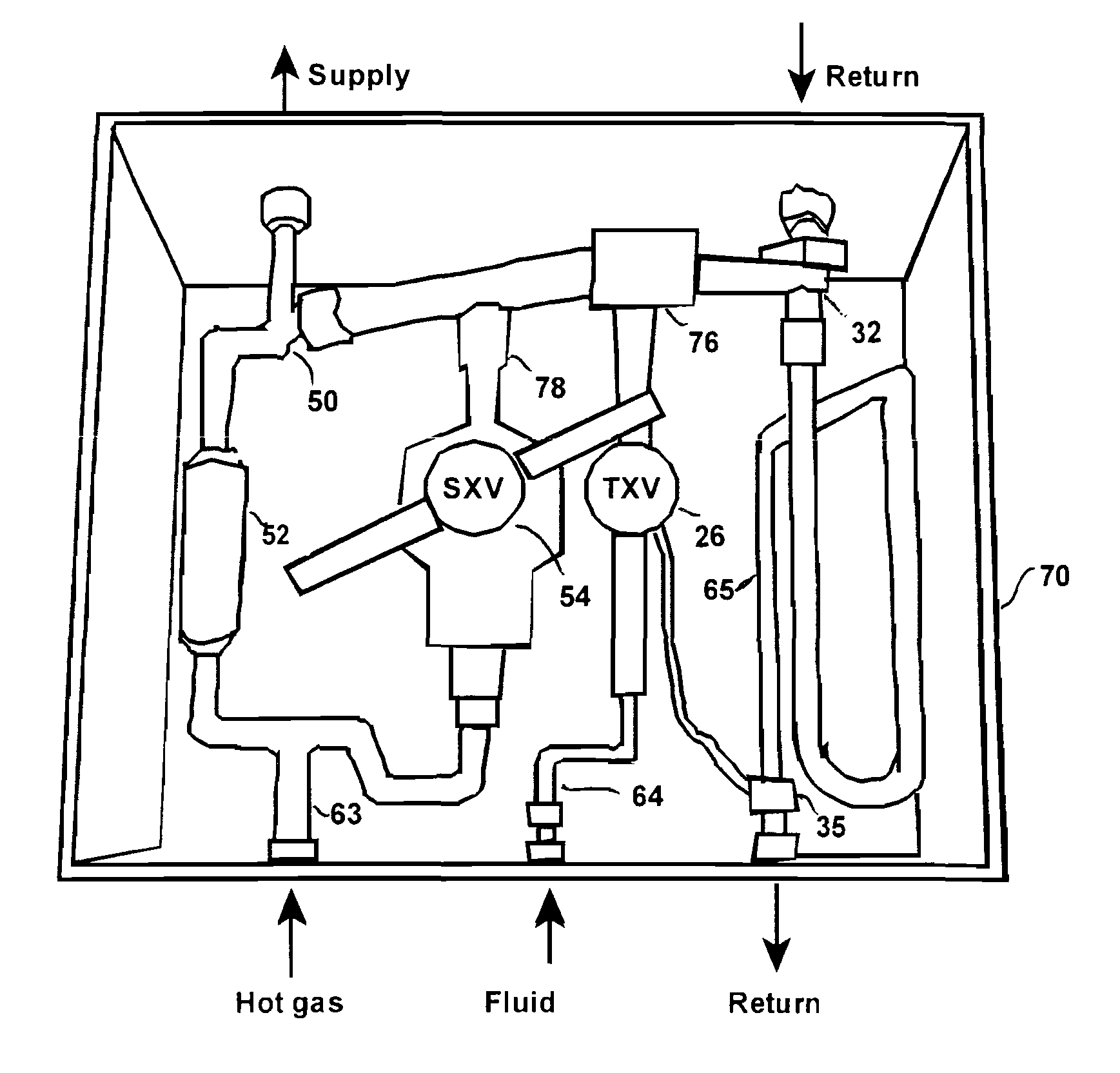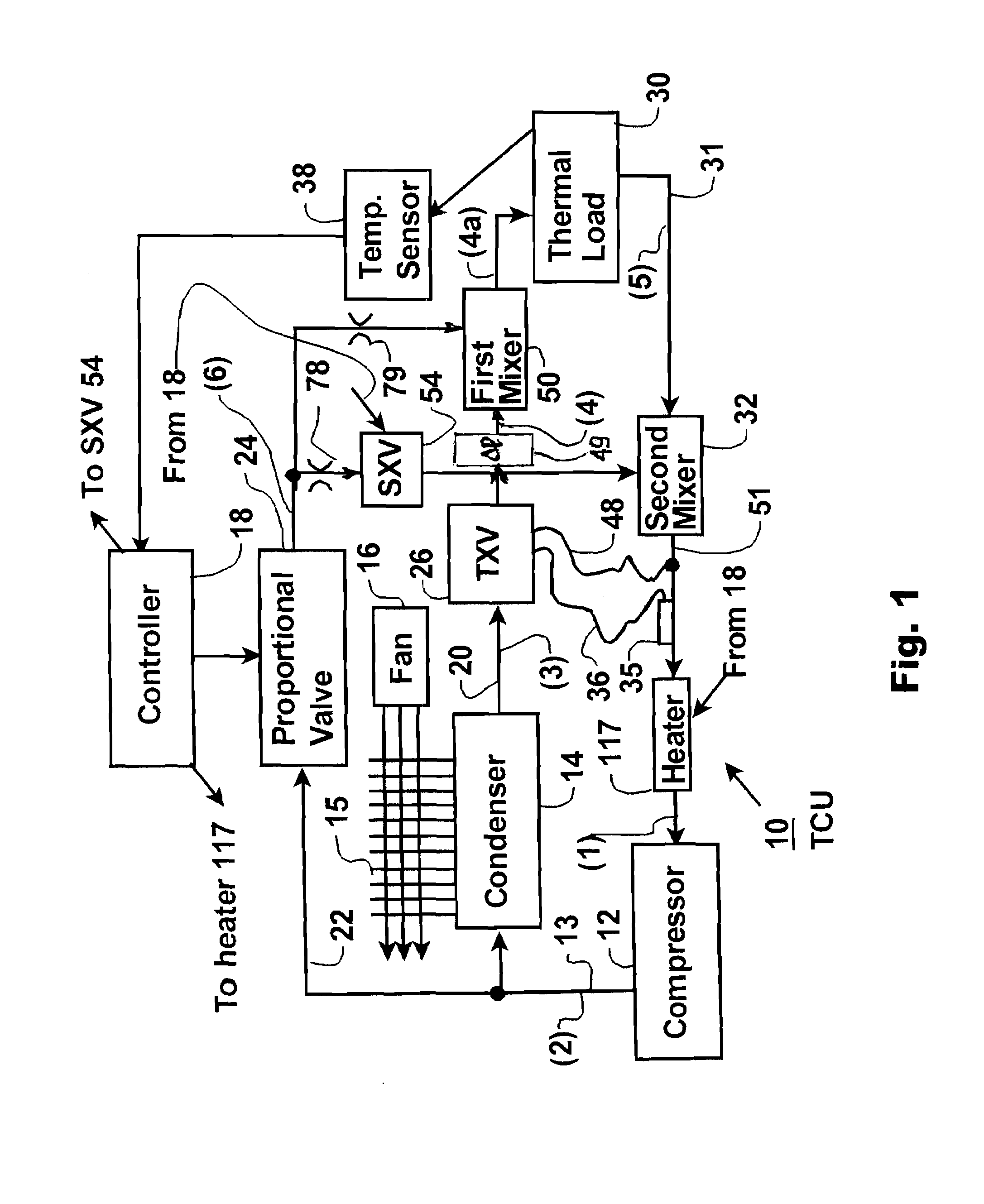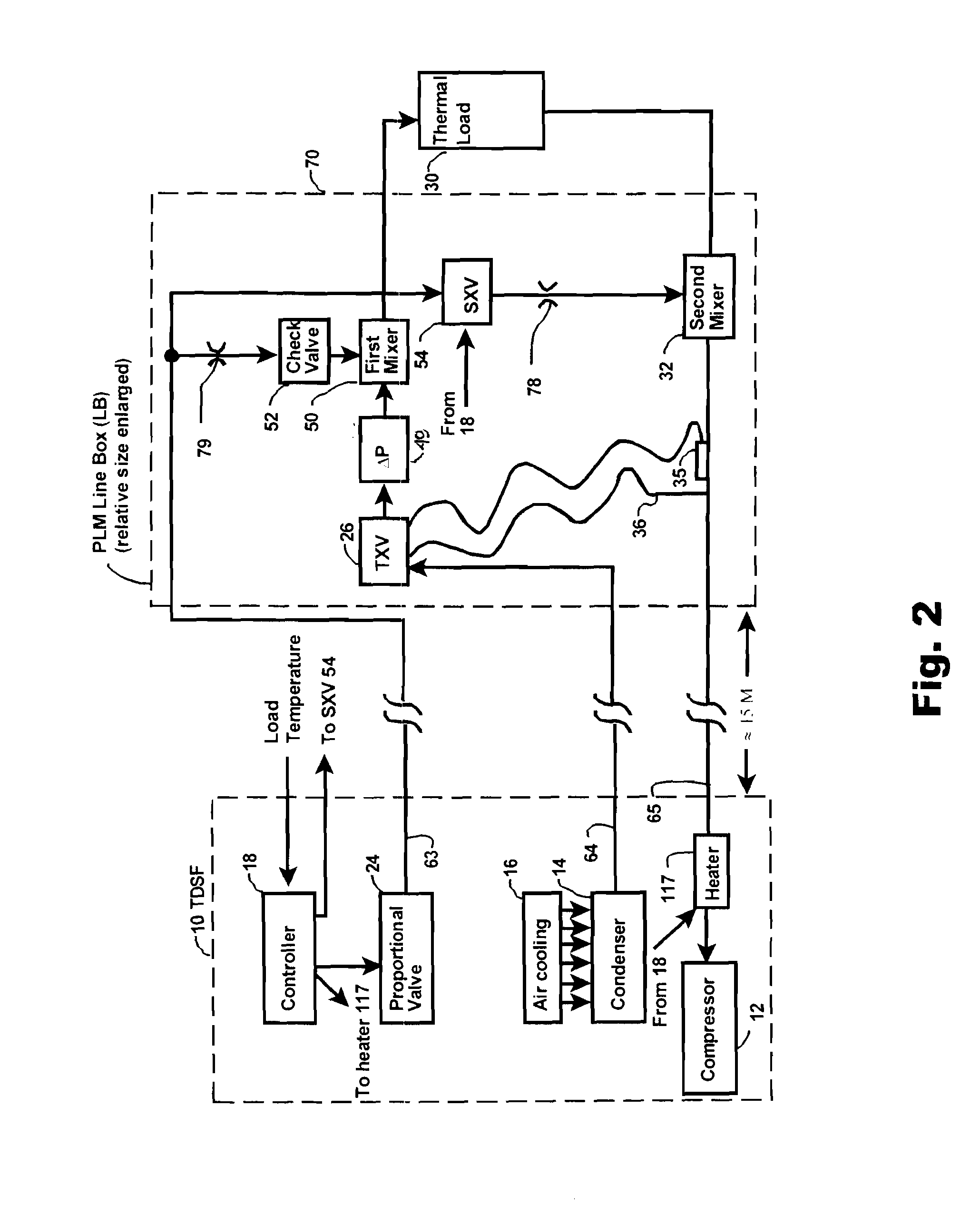Method and apparatus for thermal exchange with two-phase media
a technology of thermal exchange and two-phase media, which is applied in the direction of domestic cooling apparatus, separation processes, instruments, etc., can solve the problems of high energy consumption, unfavorable thermal exchange, and high energy consumption, and achieves tight control, improved thermal exchange efficiency, and higher heat transfer coefficient
- Summary
- Abstract
- Description
- Claims
- Application Information
AI Technical Summary
Benefits of technology
Problems solved by technology
Method used
Image
Examples
Embodiment Construction
[0023]A generalized system utilizing post load mixing (PLM) is shown in FIG. 1, to which reference is now made. The thermal control system 10 or “TCU” is consistent with the TDSF concept but differentiated by incorporating the PLM approach, and forms a closed loop that encompasses an active thermal control system (TCU) 10 and a thermal load 30. The thermal load 30 is typically a heat exchanger that functions with a processing unit (not shown), such as a chuck for processing semiconductors. In the thermal control system 10 a refrigerant comprising a medium such as R-507 is input to a compressor 12 in gaseous form and a pressurized output is provided therefrom into a main line 13. One branch from the main line 13 includes an air cooled (in this example) condenser 14 having an external air-cooled fin structure 15 engaged by flow from a fan 16 shown only symbolically. The condenser 14 provides a fully or substantially liquefied output of refrigerant at an essentially ambient temperature...
PUM
| Property | Measurement | Unit |
|---|---|---|
| Volume | aaaaa | aaaaa |
| Temperature | aaaaa | aaaaa |
| Pressure | aaaaa | aaaaa |
Abstract
Description
Claims
Application Information
 Login to View More
Login to View More - R&D
- Intellectual Property
- Life Sciences
- Materials
- Tech Scout
- Unparalleled Data Quality
- Higher Quality Content
- 60% Fewer Hallucinations
Browse by: Latest US Patents, China's latest patents, Technical Efficacy Thesaurus, Application Domain, Technology Topic, Popular Technical Reports.
© 2025 PatSnap. All rights reserved.Legal|Privacy policy|Modern Slavery Act Transparency Statement|Sitemap|About US| Contact US: help@patsnap.com



